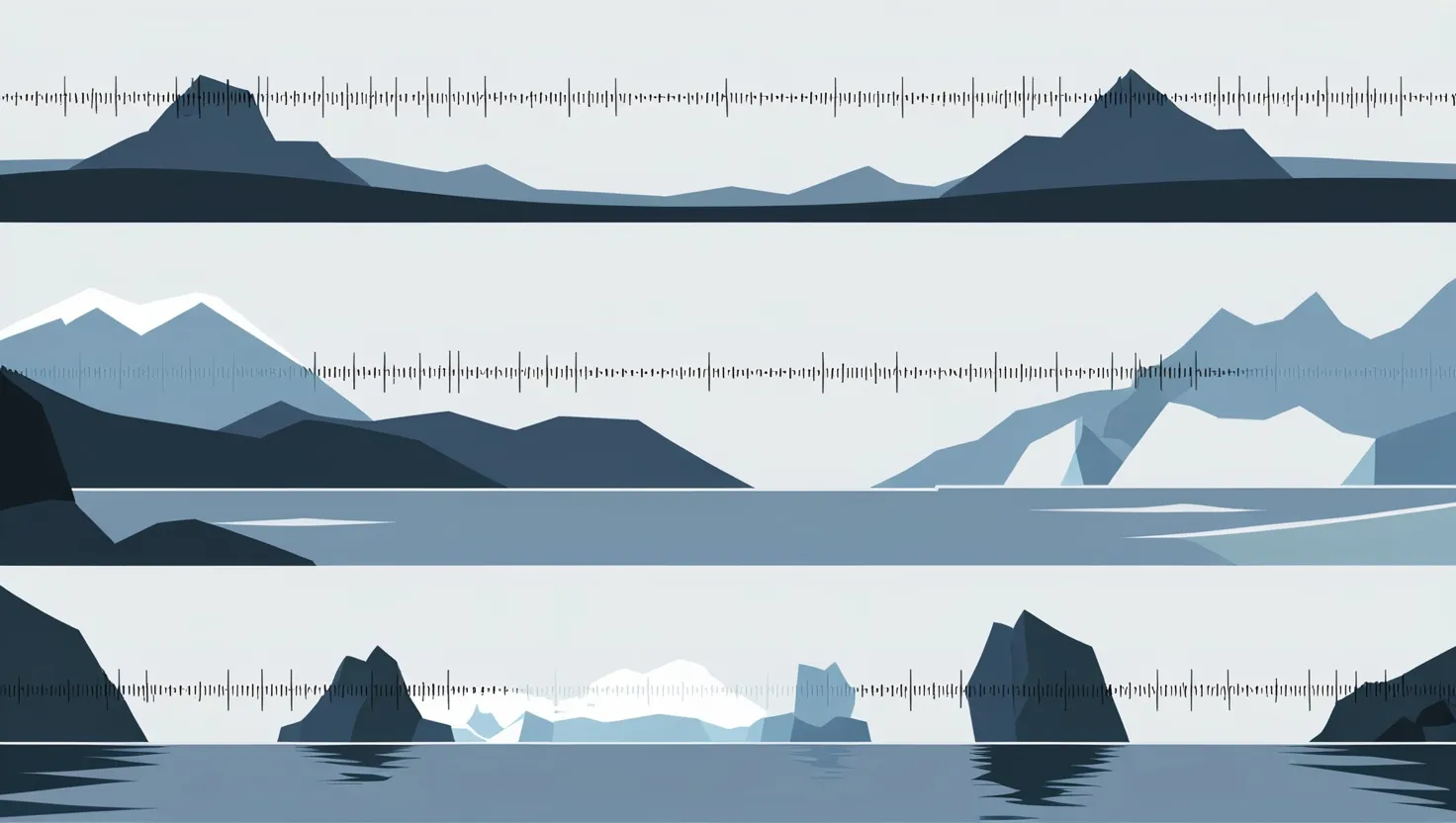The world of sound is a fascinating realm, filled with mysteries that continue to baffle scientists and captivate the imagination of people around the globe. From unexplained hums to eerie whistles, these acoustic anomalies challenge our understanding of physics, geology, and even human perception. Let’s explore seven of the most intriguing sound phenomena that have sparked both scientific inquiry and conspiracy theories.
In the quiet town of Windsor, Ontario, residents have been plagued by a persistent low-frequency sound for over a decade. Known as the Windsor Hum, this mysterious noise has been described as a combination of a idling diesel engine and a distant rumble. What makes this phenomenon particularly perplexing is its inconsistent nature - some residents hear it constantly, while others never experience it at all. Despite numerous investigations by both Canadian and American authorities, the source of the hum remains elusive. Theories range from industrial activity on nearby Zug Island to underground geological movements, but no conclusive evidence has been found to support any single explanation.
“The only thing worse than the sound is that nobody’s doing anything about it,” remarked a frustrated Windsor resident during a town hall meeting. This sentiment echoes the feelings of many who live with unexplained acoustic phenomena - the sense of helplessness in the face of an invisible, intangible force.
Moving from the localized mystery of Windsor to a global phenomenon, we encounter the Sky Trumpets. Reports of strange, trumpet-like sounds seemingly emanating from the sky have come from all corners of the world. These sounds, often described as metallic and otherworldly, have been captured on numerous videos and audio recordings. While some scientists attribute these sounds to natural phenomena like tectonic plates grinding against each other or atmospheric pressure changes, others remain skeptical. The widespread nature of these reports and the similarity in descriptions across different cultures and geographical locations add an extra layer of intrigue to this acoustic puzzle.
Have you ever heard a sound that seemed to come from everywhere and nowhere at once? This is often how witnesses describe their experience with the Sky Trumpets.
Beneath our feet, another acoustic mystery unfolds. In Guatemala, residents near large sinkholes have reported hearing strange subterranean rumblings. These noises, often described as deep, resonant booms, have no clear source. Geologists have proposed that they might be caused by the movement of underground water or the shifting of rock layers, but no definitive explanation has been found. The Guatemala Sinkhole Noises serve as a reminder of how little we truly understand about the complex acoustic environment beneath the Earth’s surface.
Perhaps the most alarming of these acoustic anomalies are the Cuban Sonic Attacks. Between 2016 and 2018, U.S. and Canadian diplomats in Havana reported experiencing strange sounds accompanied by physical symptoms such as headaches, nausea, and cognitive issues. Initial theories suggested the use of a sonic weapon, but extensive investigations have failed to identify any such device. The incident has strained diplomatic relations and raised questions about the potential weaponization of sound. As we continue to unravel this mystery, it forces us to confront the unsettling possibility that sound could be used as a tool for harm in ways we don’t yet fully understand.
“The most incomprehensible thing about the world is that it is comprehensible,” Albert Einstein once said. In the case of these acoustic anomalies, we are reminded that there is still much about our world that defies easy explanation.
Off the coast of Oregon, another acoustic oddity awaits. Ships traversing these waters have reported hearing a mysterious whistle-like sound. Dubbed the Oregon Coast Whistle, this phenomenon has been documented by multiple crews but remains unexplained. Some have speculated that it could be related to underwater volcanic activity or the movement of tectonic plates, while others propose more exotic explanations involving secret underwater bases or unknown marine life. Whatever the cause, the Oregon Coast Whistle serves as a reminder of how much of our oceans remain unexplored and unknown.
In the frigid expanses of Antarctica, scientists have discovered yet another acoustic wonder. The Antarctic Ice Shelf Songs are strange frequencies produced by the movement and melting of ice shelves. These “songs,” which are too low for human ears to detect without special equipment, provide valuable data about the health of these massive ice formations. However, they also present a mystery - why do different ice shelves produce different frequencies? And what can these sounds tell us about the future of our planet’s polar regions?
What secrets might be hidden in the sounds of melting ice? As climate change continues to reshape our world, the answers to these questions could prove crucial.
Finally, we travel back in time to the Cold War era and the Moscow Signal. From 1953 to 1976, the U.S. embassy in Moscow was bombarded with low-level microwave radiation. While not strictly an acoustic phenomenon, the Moscow Signal shares many characteristics with other mysterious sound incidents. The purpose of this microwave transmission was never definitively established - was it an attempt at espionage, a form of harassment, or something else entirely? The incident sparked years of research into the effects of non-ionizing radiation on human health and cognition, leaving a lasting impact on our understanding of the potential uses and abuses of electromagnetic energy.
These seven acoustic anomalies represent just a fraction of the unexplained sound phenomena that exist in our world. They challenge our understanding of physics, push the boundaries of our scientific knowledge, and remind us of the complex and often mysterious nature of our acoustic environment. From the depths of the ocean to the far reaches of our atmosphere, these sounds continue to perplex and fascinate us.
As we continue to investigate these phenomena, we must ask ourselves: What other acoustic mysteries might be out there, waiting to be discovered? How might our understanding of sound change as we uncover the secrets behind these anomalies? And perhaps most importantly, what do these mysteries tell us about the limitations of our current scientific understanding?
The study of these acoustic anomalies is more than just an exercise in scientific curiosity. It has real-world implications for fields ranging from geology and oceanography to national security and public health. The Windsor Hum, for example, has had tangible effects on the quality of life for residents in the affected area. The Cuban Sonic Attacks, whether ultimately proven to be the result of a weapon or some other phenomenon, have had serious diplomatic and health consequences.
Moreover, these mysteries highlight the interconnected nature of our world. The Sky Trumpets, reported across multiple continents, remind us that acoustic phenomena don’t respect national borders. The Antarctic Ice Shelf Songs provide crucial data about climate change, a global issue that affects us all. Even the localized phenomena, like the Guatemala Sinkhole Noises, can provide insights into geological processes that occur worldwide.
As we delve deeper into these acoustic enigmas, we’re forced to confront the limitations of our current scientific understanding. Each of these phenomena challenges existing models and theories, pushing researchers to think outside the box and develop new approaches to studying sound. This process of questioning and discovery is at the heart of scientific progress.
“The important thing is not to stop questioning,” Albert Einstein once said. “Curiosity has its own reason for existing.” In the case of these acoustic anomalies, our curiosity drives us to explore the unknown, to push the boundaries of our knowledge, and to seek explanations for the seemingly inexplicable.
These mysteries also serve as a humbling reminder of how much we still have to learn about our world. Despite our advanced technology and scientific understanding, there are still phenomena that elude our comprehension. This realization can be both frustrating and exciting - frustrating because we lack answers, but exciting because it means there are still discoveries to be made.
As we continue to investigate these acoustic anomalies, we must remain open to new possibilities and explanations. Sometimes, the truth behind these mysteries turns out to be more mundane than we initially imagined - but often, it’s even more fascinating than we could have predicted. The journey of discovery is just as important as the destination.
What new technologies or methods might help us solve these acoustic puzzles? How might our understanding of these phenomena change as we develop more sensitive instruments or new analytical techniques?
It’s also worth considering the cultural impact of these acoustic mysteries. They have inspired countless conspiracy theories, works of fiction, and artistic interpretations. In many ways, they serve as modern-day myths, capturing our imagination and reflecting our fears and fascinations. The way we interpret and respond to these phenomena says as much about us as it does about the sounds themselves.
As we look to the future, it’s clear that the study of acoustic anomalies will continue to be an important field of research. Not only do these phenomena have practical implications for various scientific disciplines, but they also challenge us to think critically, to question our assumptions, and to remain curious about the world around us.
In conclusion, these seven acoustic anomalies - the Windsor Hum, the Sky Trumpets, the Guatemala Sinkhole Noises, the Cuban Sonic Attacks, the Oregon Coast Whistle, the Antarctic Ice Shelf Songs, and the Moscow Signal - represent some of the most intriguing unsolved mysteries in the world of sound. They challenge our scientific understanding, spark our curiosity, and remind us of the complex and often mysterious nature of our acoustic environment.
As we continue to explore these phenomena, we must remain open to new ideas and approaches. Who knows what other acoustic wonders are out there, waiting to be discovered? The world of sound is vast and complex, and these seven mysteries are likely just the tip of the iceberg. As we delve deeper into these acoustic enigmas, we’re not just learning about sound - we’re learning about the fundamental nature of our world and our place within it.






